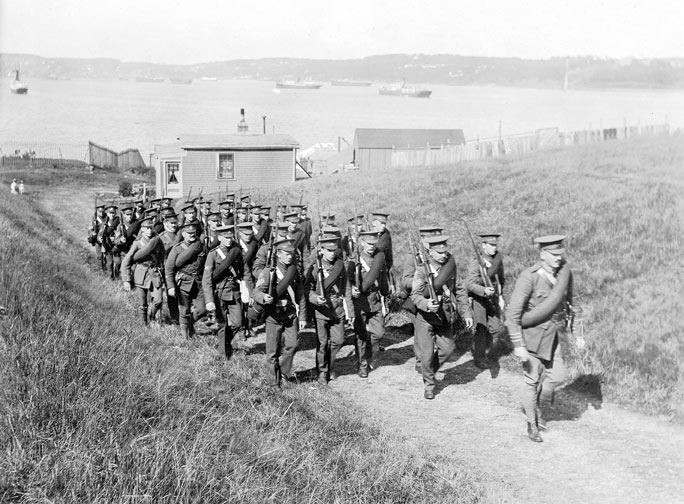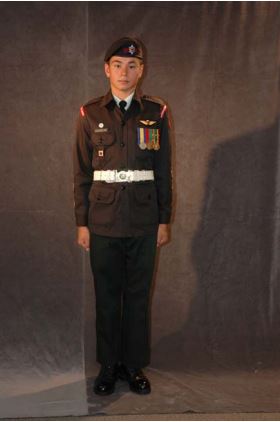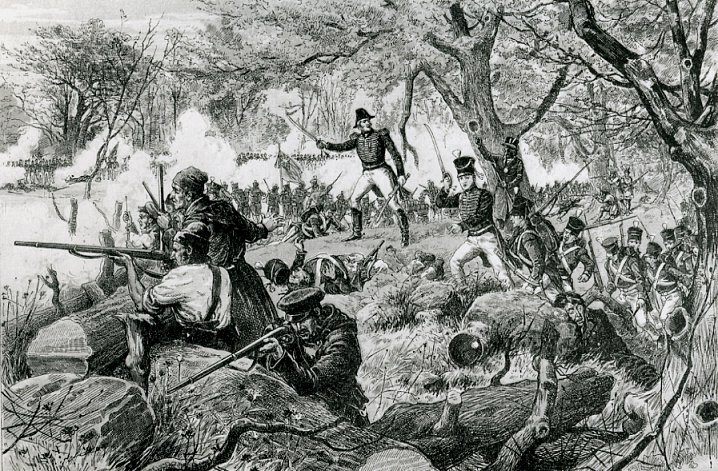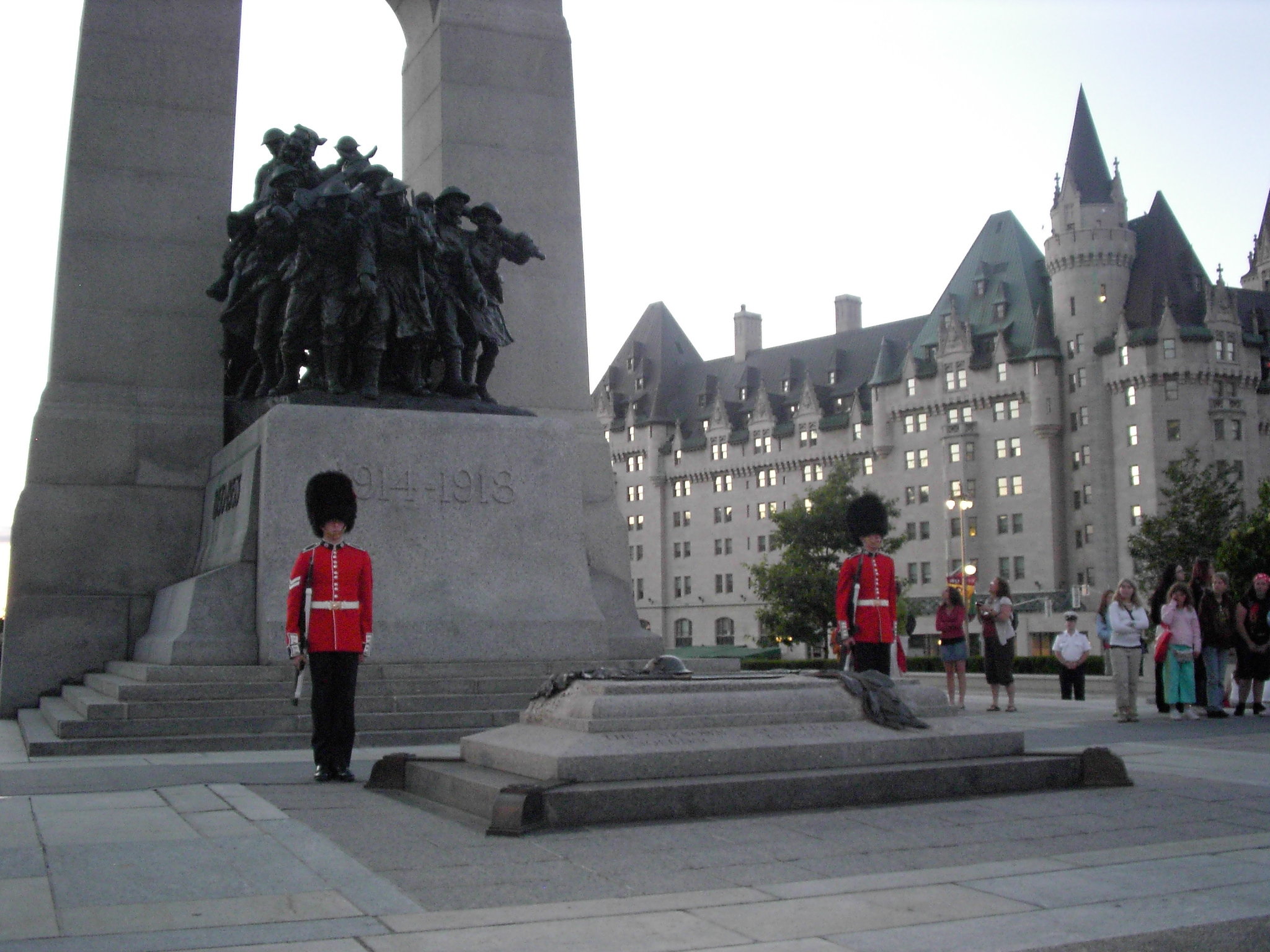|
20th Field Regiment, Royal Canadian Artillery
The 20th Field Artillery Regiment, RCA (French: ) is a Canadian Forces Primary Reserve artillery regiment of 41 Canadian Brigade Group, composed of the Headquarters and Services Battery and two firing batteries, the 61st Field Battery, RCA, based in Edmonton and 78th Field Battery, RCA, based in Red Deer, Alberta. Allocated Batteries * 61st Field Battery, RCA * 78th Field Battery, RCA Lineage * Originated on 2 February 1920, in Edmonton, Alberta as the 20th Brigade, CFA. * Redesignated on 1 July 1925, as the 20th Field Brigade, CA. * Redesignated on 3 June 1935, as the 20th Field Brigade, RCA. * Redesignated on 7 November 1940, as the 20th (Reserve) Field Brigade, RCA. * Redesignated on 1 March 1943, as the 20th (Reserve) Field Regiment, RCA. * Redesignated on 1 April 1946, as the 20th Heavy Anti-Aircraft Regiment, RCA. * Redesignated on 21 September 1954, as the 96th Independent Medium Battery, RCA. * Redesignated on 12 April 1960, as the 96th Independent Medium Artillery B ... [...More Info...] [...Related Items...] OR: [Wikipedia] [Google] [Baidu] |
Royal Regiment Of Canadian Artillery
, colors = The guns of the RCA themselves , colors_label = Colours , march = * Slow march: "Royal Artillery Slow March" * Quick march (dismounted parades): " British Grenadiers/The Voice of the Guns" * Trot past: "Keel Row" * Gallop past (horse artillery only): " Bonnie Dundee" , mascot = , anniversaries = * 1855: Militia Act of 1855 passed by the Parliament of the Province of Canada and creation the first truly Canadian army units * 27 November 1856: first Canadian Artillery unit formed (''Battalion of Montreal Artillery'') * 10 August 1883: ''Regiment of Canadian Artillery'' of the Permanent Active Militia authorized to be formed , equipment = * 105 mm Howitzer, C3 * 105 mm Howitzer, LG1 Mk II * 155 mm Howitzer M777C1 , equipment_label = Current weapon systems , battle_honours = The word la, Ubique, lit=Everywhere, ta ... [...More Info...] [...Related Items...] OR: [Wikipedia] [Google] [Baidu] |
Royal Canadian Army Cadets
The Royal Canadian Army Cadets (RCAC; french: Cadets royaux de l’Armée canadienne) is a national Canadian youth program sponsored by the Canadian Armed Forces and the civilian Army Cadet League of Canada. Under the authority of the National Defence Act, the program is administered by the Canadian Armed Forces and funded through the Department of National Defence. Additionally, the civilian partner of the Royal Canadian Army Cadets, the Army Cadet League of Canada, also ensures financial, accommodations and transportation support for RCAC programs and services at a community level. Many Royal Canadian Army Cadet corps receive logistical assistance and administrative support from their affiliated Regular Force or Reserve Force unit. While cadets may wear the badges and accoutrements of their affiliated unit, cadets are not members of the Canadian Armed Forces. With roots in the early drill associations authorized in 1861, Royal Canadian Army Cadets is Canada's oldest youth pr ... [...More Info...] [...Related Items...] OR: [Wikipedia] [Google] [Baidu] |
List Of Armouries In Canada
A number of armouries and drill halls exist in communities across Canada. Of these, the majority were built in Ontario and Quebec. Architecture Chief Dominion Architects The Chief Dominion Architect(s) designed a number of prominent public buildings in Canada including armouries, drill halls, post offices, and Dominion Public Buildings : Thomas Seaton Scott (1871–1881); Thomas Fuller (1881–1897); David Ewart (1897–1914); Edgar Lewis Horwood (1914–1918); Richard Cotsman Wright (1918–1927); Thomas W. Fuller (1927–1936), Charles D. Sutherland (1936–1947); Joseph Charles Gustave Brault (1947–1952) Thomas Seaton Scott, Thomas Fuller and Thomas W. Fuller adopted the ''Dominion Style'' Neo-Gothic style. David Ewart embraced the Baronial style. The armouries may display Gothic Revival (1740s+), Tudorbethan (1835–1885+), Romanesque Revival (1840–1930); Colonial Revival (1890s+); Châteauesque (1887–1930) or Edwardian Baroque 1901-1922 style. Drawings for ... [...More Info...] [...Related Items...] OR: [Wikipedia] [Google] [Baidu] |
Canadian Forces
} The Canadian Armed Forces (CAF; french: Forces armées canadiennes, ''FAC'') are the unified Military, military forces of Canada, including sea, land, and air elements referred to as the Royal Canadian Navy, Canadian Army, and Royal Canadian Air Force. Personnel may belong to either the Regular Force or the Reserve Force, which has four sub-components: the Primary Reserve, Canadian Forces Supplementary Reserve, Supplementary Reserve, Cadet Organizations Administration and Training Service, and the Canadian Rangers. Under the ''National Defence Act'', the Canadian Armed Forces are an entity separate and distinct from the Department of National Defence (Canada), Department of National Defence (the Government of Canada, federal government department responsible for administration and formation of defence policy), which also exists as the civilian support system for the Forces. The Canadian Armed Forces are a professional Volunteer military, volunteer force that consists of approxi ... [...More Info...] [...Related Items...] OR: [Wikipedia] [Google] [Baidu] |
History Of The Canadian Army
The history of the Canadian Army, began when the title first came into official use in November 1940, during the Second World War, and is still used today. Although the official titles, Force Mobile Command, and later Land Force Command, were used from February 1968 to August 2011, "Canadian Army" continued to be unofficially used to refer to the ground forces of the Canadian Armed Forces, much as it has been from Confederation in 1867 to the present. The term was often even used in official military publications, for example in recruiting literature and the official newspaper of the Canadian Forces, ''The Maple Leaf''. On August 16, 2011, the title, "Canadian Army", was officially restored, once again bringing the official designation in line with common and historical usage. Formation Prior to Canadian Confederation in 1867, defence for the colonies that comprise present-day Canada was dependent on the armies of colonial powers. The military of New France (1608–1763) was de ... [...More Info...] [...Related Items...] OR: [Wikipedia] [Google] [Baidu] |
Military History Of Canada
The military history of Canada comprises hundreds of years of armed actions in the territory encompassing modern Canada, and interventions by the Canadian military in conflicts and peacekeeping worldwide. For thousands of years, the area that would become Canada was the site of sporadic intertribal conflicts among Aboriginal peoples. Beginning in the 17th and 18th centuries, Canada was the site of four colonial wars and two additional wars in Nova Scotia and Acadia between New France and New England; the conflicts spanned almost seventy years, as each allied with various First Nation groups. In 1763, after the final colonial war—the Seven Years' War—the British emerged victorious and the French civilians, whom the British hoped to assimilate, were declared "British Subjects". After the passing of the Quebec Act in 1774, giving the Canadians their first charter of rights under the new regime, the northern colonies chose not to join the American Revolution and remained loyal to ... [...More Info...] [...Related Items...] OR: [Wikipedia] [Google] [Baidu] |
26th Field Artillery Regiment, RCA
The 26th Field Artillery Regiment, Royal Canadian Artillery, is a Canadian Army Primary Reserve artillery regiment based in Brandon and Portage la Prairie, Manitoba. 71 Field Battery, Headquarters and Service Battery, and Regimental Headquarters are in Brandon and 13 Field Battery is in Portage la Prairie Together with 10th Field Artillery Regiment, RCA and 116th Independent Field Battery, RCA, it forms the 38 Artillery Tactical Group within the 38 Canadian Brigade Group of 3rd Canadian Division. Allocated batteries *13th Field Battery, RCA *71st Field Battery, RCACanadian Forces Publication A-DH-267-003 Insignia and Lineages of the Canadian Forces. Volume 3: Combat Arms Regiments. Lineage 26th Field Artillery Regiment, RCA *Originated on 1 April 1908, in Brandon, Manitoba, as the ''99th Regiment''. *Redesignated on 1 May 1911, as the ''99th Manitoba Rangers''. *Redesignated on 12 March 1920, as ''The Manitoba Rangers''. *Amalgamated on 15 December 1936, with the ''59th F ... [...More Info...] [...Related Items...] OR: [Wikipedia] [Google] [Baidu] |
15th Field Artillery Regiment, RCA
15th Field Artillery Regiment, RCA, is a Primary Reserve Royal Canadian Artillery (RCA) regiment based in Vancouver, British Columbia, at the Bessborough Armoury. 15th Field Regiment is part of the 39 Canadian Brigade Group of 3rd Canadian Division. The regiment was created in 1920 as one of the recommendations of the Otter Committee. In the Second World War it manned the coastal defence artillery guns that protected the Port of Vancouver. After the war the regiment reverted to field artillery. While the regiment has never deployed overseas, several of its members have individually participated in Canadian Forces missions overseas. This unit is not the same 15th Field Artillery Regiment (4th Canadian Armoured Division) that served in the Second World War. History Foundations The end of World War I saw thousands of Canadians returning home from overseas service with the Canadian Expeditionary Force in Europe. In January 1918 Major-General William Otter recommended to t ... [...More Info...] [...Related Items...] OR: [Wikipedia] [Google] [Baidu] |
Thorsby, Alberta
Thorsby is a town in central Alberta, Canada. It is approximately west of the Leduc on Highway 39. Pigeon Lake and Pigeon Lake Provincial Park are located south of the community. Demographics In the 2021 Census of Population conducted by Statistics Canada, the Town of Thorsby had a population of 967 living in 405 of its 442 total private dwellings, a change of from its 2016 population of 985. With a land area of , it had a population density of in 2021. The population of the Town of Thorsby according to its 2017 municipal census is 1,015, a change of from its 2015 municipal census population of 1,025. In the 2016 Census of Population conducted by Statistics Canada, the Town of Thorsby recorded a population of 985 living in 394 of its 428 total private dwellings, a change from its 2011 population of 951. With a land area of , it had a population density of in 2016. Economy The Town of Thorsby is a member of the Leduc-Nisku Economic Development Association, ... [...More Info...] [...Related Items...] OR: [Wikipedia] [Google] [Baidu] |
Library And Archives Canada
Library and Archives Canada (LAC; french: Bibliothèque et Archives Canada) is the federal institution, tasked with acquiring, preserving, and providing accessibility to the documentary heritage of Canada. The national archive and library is the fifth largest library in the world. The LAC reports to the Parliament of Canada through the Minister of Canadian Heritage. The LAC traces its origins to the Dominion Archives, formed in 1872, and the National Library of Canada, formed in 1953. The former was later renamed as the Public Archives of Canada in 1912, and the National Archives of Canada in 1987. In 2004, the National Archives of Canada and the National Library of Canada were merged to form Library and Archives Canada. History Predecessors The Dominion Archives was founded in 1872 as a division within the Department of Agriculture tasked with acquiring and transcribing documents related to Canadian history. In 1912, the division was transformed into an autonomous organ ... [...More Info...] [...Related Items...] OR: [Wikipedia] [Google] [Baidu] |
Canadian Army
The Canadian Army (french: Armée canadienne) is the command (military formation), command responsible for the operational readiness of the conventional ground forces of the Canadian Armed Forces. It maintains regular forces units at bases across Canada, and is also responsible for the Army Reserve, the largest component of the Primary Reserve. The Army is headed by the concurrently held Commander of the Canadian Army and Chief of the Army Staff, who is subordinate to the Chief of the Defence Staff (Canada), Chief of the Defence Staff. The Army is also supported by 3,000 civilian employees from the civil service. Formed in 1855, as the Canadian Militia#Active militias, Active Militia, in response to the threat of the United States to the Province of Canada after the British Garrison left for the Crimean War. This Militia was later split into the Permanent Active Militia and the Non-Permanent Active Militia. Finally, in 1940, an Order in Council was issued to rename the active m ... [...More Info...] [...Related Items...] OR: [Wikipedia] [Google] [Baidu] |
Red Deer, Alberta
Red Deer is a city in Alberta, Canada, located midway on the Calgary–Edmonton Corridor. Red Deer serves central Alberta, and key industries include health care, retail trade, construction, oil and gas, hospitality, manufacturing and education. It is surrounded by Red Deer County and borders on Lacombe County. The city is located in aspen parkland, a region of rolling hills, alongside the Red Deer River. History The area was inhabited by First Nations including the Blackfoot, Plains Cree and Stoney before the arrival of European fur traders in the late eighteenth century. A First Nations trail ran from the Montana Territory across the Bow River near present-day Calgary and on to Fort Edmonton, later known as the Calgary and Edmonton Trail. The trail crossed the Red Deer River at a wide, stony shallows. The "Old Red Deer Crossing" is upstream from the present-day city. Cree people called the river , which means "Elk River." European arrivals sometimes called North America ... [...More Info...] [...Related Items...] OR: [Wikipedia] [Google] [Baidu] |








